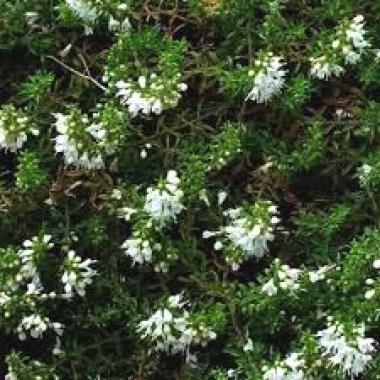


Creeping Savory
Satureja spicigera (Satureja repanda)

Creeping savory is an easy to grow perennial herb which prefers poor, well drained and even stony soil.
It dislikes damp, rich soils and shady areas.
When grown as a culinary herb it has an aromatic peppery flavour and
can be used in all the same ways as the bushy winter savory.
It is good for attracting bees to the garden for pollination and
also can be grown as a companion plant in the vegetable plot alongside beans and onions.
Savory has been used in cooking for over 2000 years.
The Italians may have been the first to use savory as a culinary herb, and it is still used in Italy a lot today.
- Savory is particularly good when cooked with all types of beans and pulses. The chopped leaves maybe used in dhall as a substitute for coriander, especially in winter when coriander is not so readily available.
- The chopped leaves can be used in place of basil and oregano in tomato sauces. Also the spicy flavour combines well in sausages and is traditionally used in the making of salami.
- The robust flavour withstands long cooking, making it good to use in soups and stews, and also in stuffings for roast meat.
Recipe idea:
Try creeping savory in our Golden Cauliflower Salad
in our Herb Salads recipe section.
In addition to this, its prostrate spreading tendency makes it an ideal landscaping plant alongside
our range of ever popular creeping thymes.
It has tough wiry stems the same as the thymes and looks good planted in cracks in the paving and
trailing over walls and rockeries intermingled with creeping thymes and chamomile.
Like the thymes it is tough enough to withstand some walking on, and
can even be incorporated into the planting of increasingly popular thyme lawns.
It flowers later in the summer, with whorls of pure white flowers making it look a little like a prostrate heather.
This is great when planted in combination with thymes as these have finished flowering by mid summer, thus extending the flowering season.